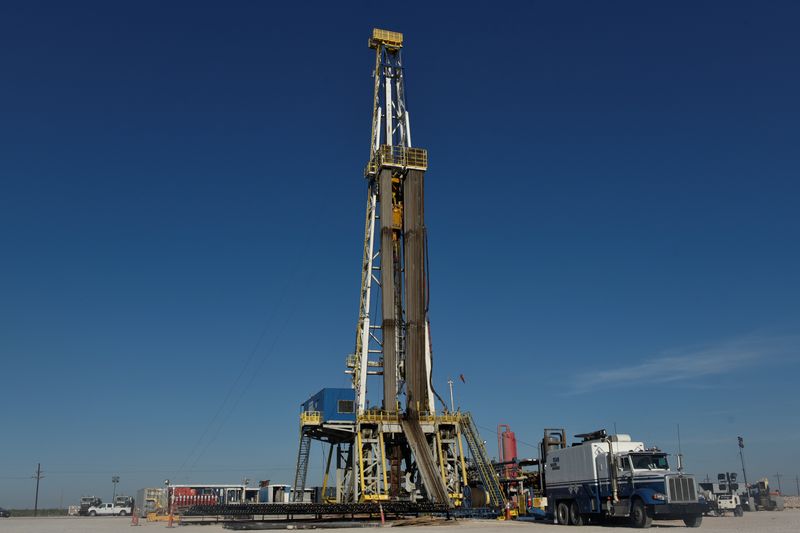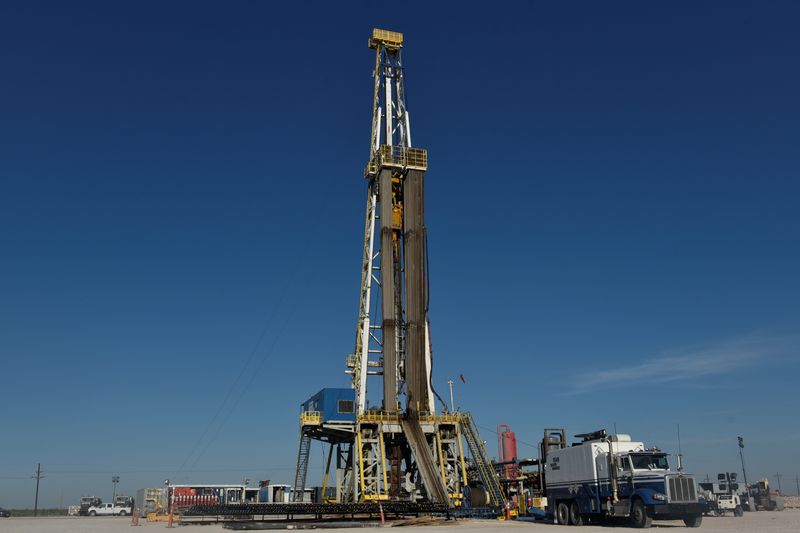Commodities
US natural gas drillers to lift 2025 output, reversing year of cuts

By Scott DiSavino
(Reuters) – U.S. producers will boost output in 2025 following a series of production cuts this year, as rising demand from liquefied natural gas export plants is expected to increase prices that had fallen to multi-decade lows.
U.S. production is on track to decline in 2024 for the first time since 2020, when the COVID pandemic reduced demand, according to the U.S. Energy Information Administration’s latest outlook.
Drillers started cutting gas production after average spot monthly prices at the U.S. Henry Hub benchmark in Louisiana fell to a 32-year low in March, and have remained relatively low since then. In some markets, spot gas prices have even traded at negative levels throughout the year, meaning producers had to pay others to take their product. [HH/GAS]
But rising demand for exports should boost average annual gas prices next year by more than 40% over the levels seen in 2024, according to analysts’ estimates.
The EIA projects annual average dry gas production will slide from a record 103.8 billion cubic feet per day (bcfd) in 2023 to 103.3 bcfd in 2024, but climb to 104.5 bcfd in 2025.
It expects total gas demand, including LNG and pipeline exports, will rise from a record 109.9 bcfd in 2023 to 111.2 bcfd in 2024 and 113.0 bcfd in 2025.
Most of 2025’s expected demand increase is due to a 14% jump in LNG exports, while domestic use – such as gas used for power generation – will likely see a decline.
From 2019 to 2023, U.S. LNG exports have soared by an average of 34% per year, while domestic gas usage has edged up by just 2% a year.
Two plants under construction are due to enter service in test mode by the end of this year, including the first 1.8-bcfd phase of Venture Global’s Plaquemines facility in Louisiana and the 1.5-bcfd Stage 3 expansion at Cheniere Energy (NYSE:)’s Corpus Christi facility in Texas.
WAITING FOR HIGHER PRICES
To meet growing export demand, several of the biggest U.S. gas producers said in their third-quarter earnings that they expect to boost output in the fourth quarter and throughout 2025.
“Producers are waiting for higher prices to deliver several bcfd of production held back … the likely start-up of Plaquemines and Corpus Christi Stage 3 should lead to much higher flows next year,” analysts at Bank of America said in a report.
Analysts forecast average annual Henry Hub gas prices would jump to a three-year high of around $3.27 per million British thermal units in 2025, up from a four-year low of $2.29 in 2024. [HH/GAS]
“The combination of growing LNG exports, increased electrical generation demand and the prospect of winter weather suggests a tighter supply-demand picture for natural gas in 2025 and beyond,” Thomas Jorden, the CEO at Coterra Energy (NYSE:), told analysts on a call to discuss the producer’s earnings.
Jorden, however, said Coterra would continue to curtail output until it sees materially better spot gas prices.
EQT (ST:), the nation’s second-biggest gas producer, boosted its fourth-quarter production guidance to 6.03-6.58 billion cubic feet of gas equivalent per day (bcfed), up from prior guidance of 5.60-6.14 bcfed. That compares with actual output of around 6.32 bcfed in the third quarter.
“I do expect (production) to come up a little bit as we get into 2025,” EQT Chief Financial Officer Jeremy Knop told analysts in an earnings call.
EOG Resources (NYSE:), another of the nation’s biggest gas producers, expects its U.S. gas output to rise from 1.745 bcfd in the third quarter to an estimated 1.800-1.850 bcfd in the fourth quarter.
That puts EOG on track to boost U.S. gas output by around 11% in 2024, up from an annual average of 1.551 bcfd in 2023.
Expand Energy, the biggest U.S. gas producer following the merger of Chesapeake Energy (NYSE:) and Southwestern Energy (NYSE:), said it could boost gas output to around 7 bcfed in 2025, up from around 6.75 bcfed in the third quarter of 2024.

But whether Expand produces that extra output in 2025 depends on market conditions.
“The company intends to prudently activate production as market conditions warrant,” Expand said, noting that by the end of 2024 it expects to be able to deliver another 1.0 bcfd of short-cycle capacity – if needed.
Commodities
Oil prices rise; U.S. crude inventories plunge, Russia-Ukraine truce eyed
Commodities
India’s Reliance to stop buying Venezuelan oil over US tariffs, sources say
Commodities
Oil prices climb on Venezuela supply worries

 Forex3 years ago
Forex3 years agoForex Today: the dollar is gaining strength amid gloomy sentiment at the start of the Fed’s week

 Forex3 years ago
Forex3 years agoUnbiased review of Pocket Option broker

 Forex3 years ago
Forex3 years agoDollar to pound sterling exchange rate today: Pound plummeted to its lowest since 1985

 Forex3 years ago
Forex3 years agoHow is the Australian dollar doing today?

 Cryptocurrency3 years ago
Cryptocurrency3 years agoWhat happened in the crypto market – current events today

 World3 years ago
World3 years agoWhy are modern video games an art form?

 Commodities3 years ago
Commodities3 years agoCopper continues to fall in price on expectations of lower demand in China

 Economy3 years ago
Economy3 years agoCrude oil tankers double in price due to EU anti-Russian sanctions























